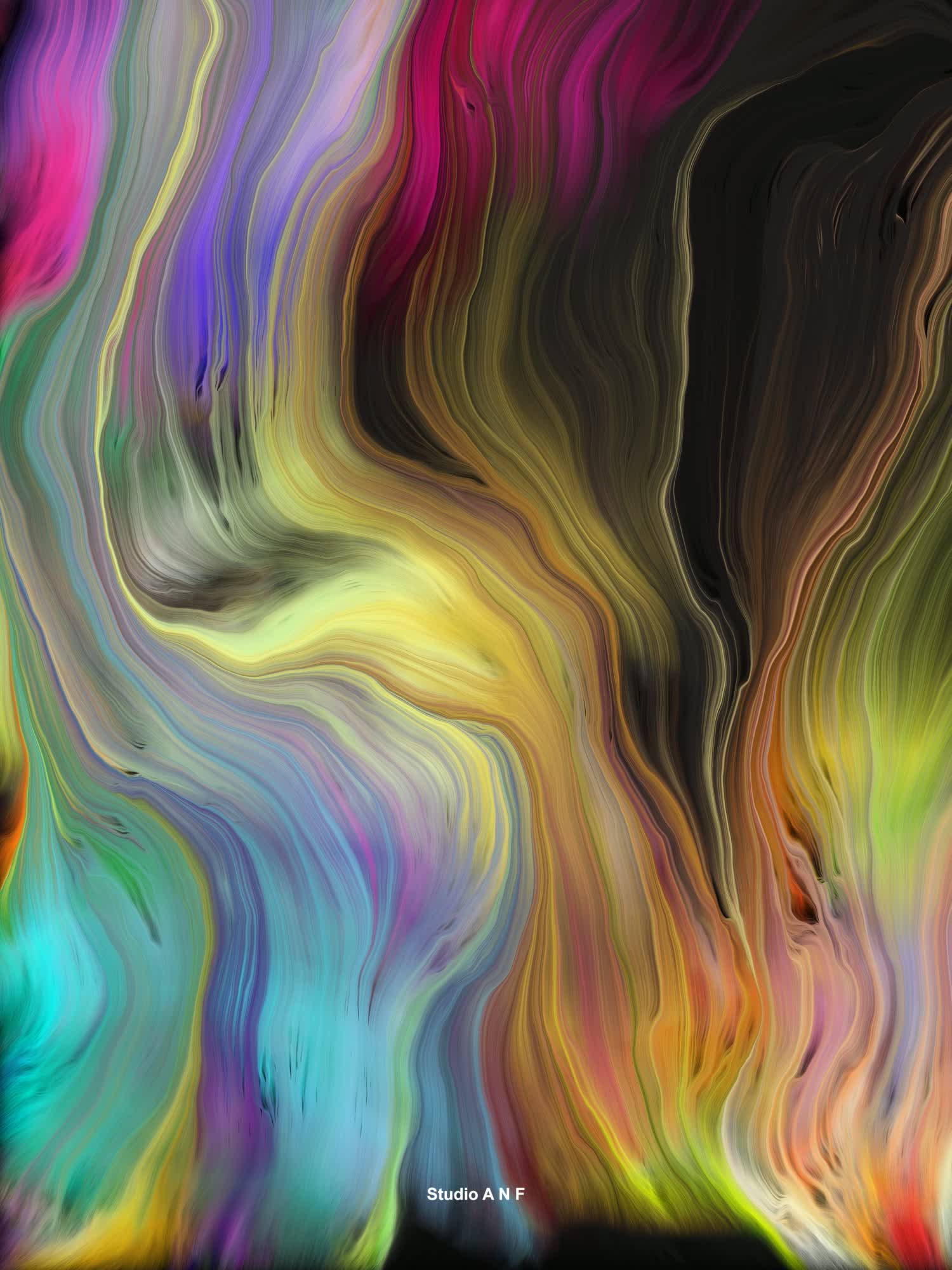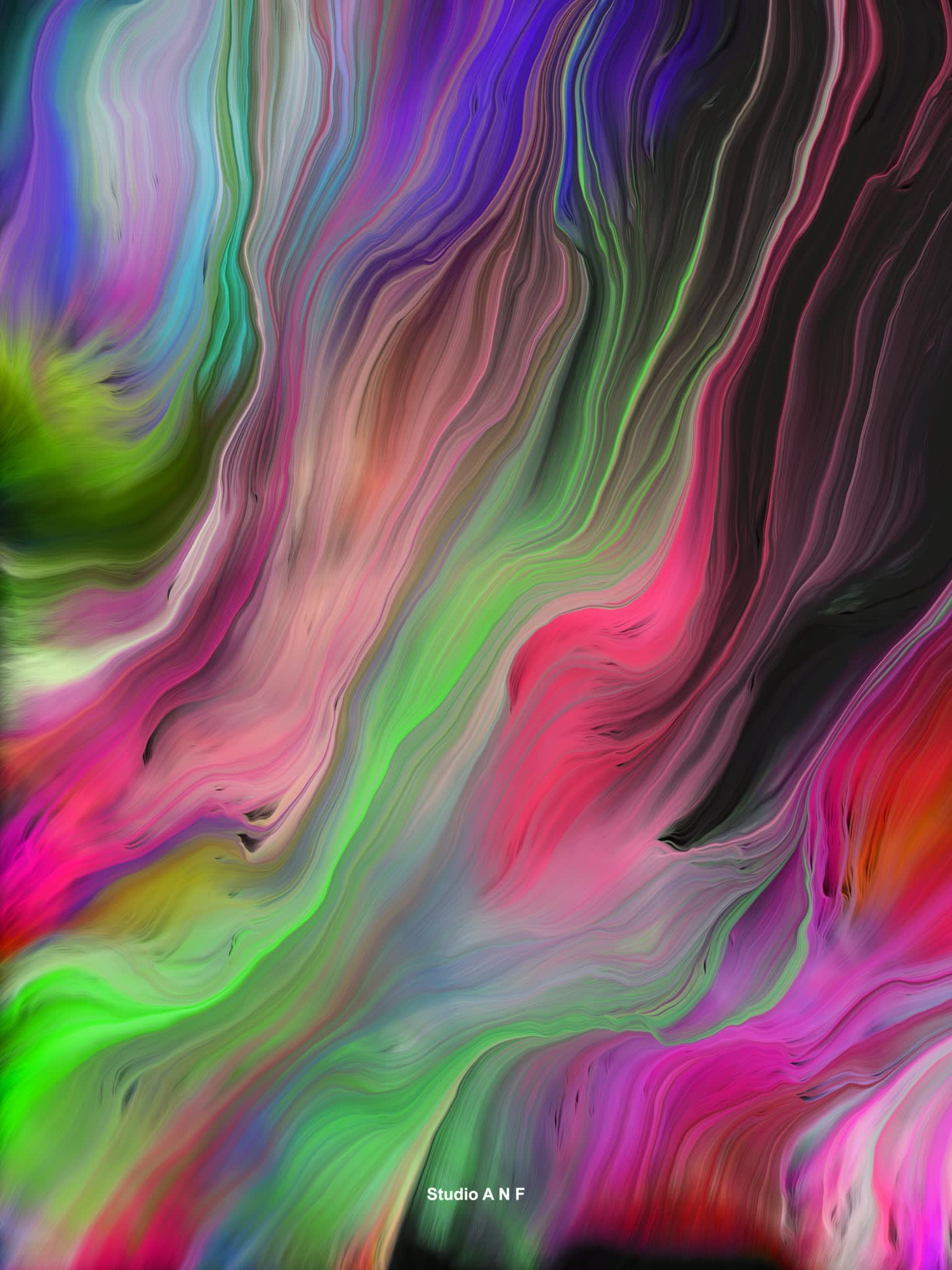
This generative artwork by Andreas Nicolas Fischer is an ethereal display of fluidity and color. A digital canvas comes alive with flowing forms and hues that seem to dance across the surface in a choreographed spectacle of digital brushwork. Each stroke melds seamlessly into the next, creating a complex network of intertwining lines and shapes.
The palette is a vivid spectrum of color ranging from deep, velvety blacks and earthy browns to bright yellows, electric blues, and passionate reds. These colors swirl together in a natural yet surreal pattern, reminiscent of geological strata or the psychedelic swirls of a retro lava lamp. The soft gradients and transitions between the colors are smooth and give the impression of a continuous, dynamic fluid motion.
This artwork suggests a process of perpetual transformation, much like the constant change seen in nature’s own designs—cloud formations, the flow of water, or the shifting sands of a dune. There’s a semblance of topography, as if we’re looking at a satellite view of a vibrant, otherworldly landscape, where the normal rules of physics and geography do not apply.
Fischer’s technique possibly involves a complex algorithmic process where mathematical rules translate into visual output, resulting in patterns that evoke the natural world while being entirely digital. His method likely includes a form of randomness, contributing to the uniqueness of each piece within the series. The result is a striking balance between chaos and order, planning and spontaneity, human intention and computer interpretation.
The lines in the artwork have a certain fluidity that suggests movement. They flow like rivers of color, meandering through different emotional landscapes. The denser areas where the dark colors pool could represent deeper thoughts or feelings, while the brighter, more vibrant areas might symbolize moments of clarity or joy.
In some places, the lines converge into points of intense color, as if we’re witnessing the birth of stars in a nebula, or the focal point of an artistic explosion. The brushstrokes have a tactile quality; one can almost feel the thickness of the paint, the drag of the brush, despite knowing that this texture is a digital construct.
The viewing experience is immersive. As the eye travels across the canvas, new forms and transitions reveal themselves. It’s easy to get lost in contemplation, each observer likely to interpret the tangle of colors and shapes in a personal way. Fischer’s work challenges the viewer to reconsider the boundaries between the digital and the organic, the planned and the random, the created and the naturally occurring.
Overall, the piece is a testament to Fischer’s mastery of digital tools to emulate the complexities and beauty of the natural world. It encourages a contemplation of the essence of art in the age of technology: the role of the artist when creation involves code as much as it does creativity, the place of human emotion in the midst of calculated algorithms, and the profound beauty that emerges from the fusion of these realms.

This second piece of generative artwork by Andreas Nicolas Fischer, which is from the same series as “Supervoid One,” is a vibrant and dynamic digital creation. The image is characterized by a mesmerizing flow of colors with a sense of depth and fluidity that seems to be in constant motion. Rich magentas, deep blacks, and a spectrum of greens and blues coalesce into ribbon-like formations, giving the impression of a digitized version of marbled paper or the swirling patterns of a kaleidoscope.
The organic, wave-like structures suggest a topographical map of a fantastical landscape or the churning surface of a colorful sea. The layering of colors and the way they blend into each other give the piece a three-dimensional quality, as if one could dive into the swirls and eddies. The variation in color density and the interplay between light and dark areas create a rhythm within the piece, almost like visual music.
Like other works by Fischer, this piece may explore the relationship between natural forms and digital processes, showcasing how algorithmic methods can emulate and amplify patterns found in nature. The artwork is a testament to the power of generative art to create complex and evocative visual experiences that can evoke emotional responses similar to those elicited by the natural world.

The artwork titled “Supervoid One R317_N880_552000” by Andreas Nicolas Fischer (Studio ANF) presents a captivating and fluid composition that resembles the organic movement of viscous fluids or the colorful interplay of light through a prism. Dominated by hues of purple and green, the piece creates a dynamic sense of movement through digital brushstrokes that swirl and twist around each other. The colors graduate smoothly from one to another, with pockets of more intense saturation that draw the eye. This digital piece could be a reflection of natural phenomena, an abstract representation of space and depth, or an exploration of color dynamics in a digital medium.
It is a fine example of Fischer’s style, which often utilizes digital algorithms and data to produce visually stunning pieces that blur the line between the digital and the natural world. The smooth, almost silky texture suggests a depth that invites the viewer to look deeper, hinting at the void or space referenced in the title. The artwork is distinctly modern, harnessing technology to create an aesthetic experience that could not be achieved with traditional media.